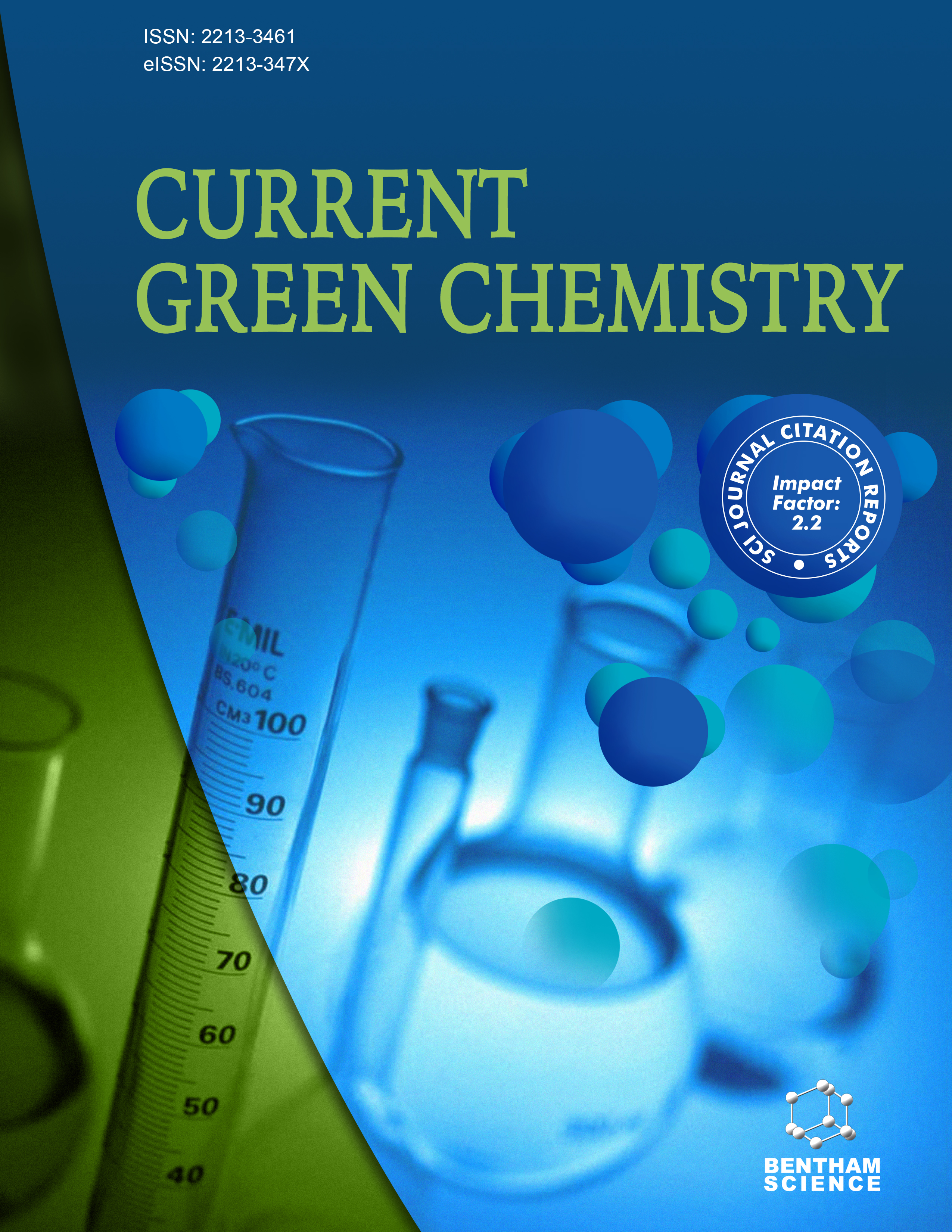- Home
- A-Z Publications
- Current Green Chemistry
- Previous Issues
- Volume 9, Issue 2, 2022
Current Green Chemistry - Volume 9, Issue 2, 2022
Volume 9, Issue 2, 2022
-
-
A Review on the Various Mechanisms of Green Synthesis of Metal Nanoparticles for Biomedical Applications
More LessAuthors: Sonal Jaiswal, Nimisha Roy, Amar Dhwaj, Deepti Verma and Amit PrabhakarDue to the hazardous effects of chemicals used, Green chemistry replaces the conventional techniques involved in nanotechnology. Green chemistry is a branch of science dealing with microbiology, phytology, and chemical engineering with the development of products by manipulating these three domains. Green synthesis is an interdisciplinary domain that relies on the use of non-toxic, bio-safe reagents, which are eco- Read More
-
-
-
Recent Progress on the Application of the Polyaniline-Pd Catalysts for C-C Cross-coupling Bond Forming Reactions: Trend and Future Analysis
More LessBy Moumita RoyIn this review, recent progress on the application of the polyaniline-supported palladium catalysts in different organic transformations focusing on different C-C bond-forming reactions such as Suzuki coupling, Heck reactions, oxidative Heck coupling, Ullmann coupling, Sonogashira coupling, and related chemistry are covered. Effect of catalyst preparation, characteristic of the support and supported palladium species on the outc Read More
-
-
-
Influence of Eco-friendly Pretreatment of Cellulose Acetate Fabric with Laccase Enzyme on the Textile Properties, Dye Adsorption Isotherms, and Thermodynamic Parameters
More LessIntroduction: Deacetylation of cellulose acetate restores hydroxyl groups on the surface of fibers and improves hydrophilicity. From an environmental point of view, the conventional deacetylation process involves alkalinity and large effluent volume. The goal of this work is to introduce a new ecofriendly bio-treatment process. Methods: In this study, cellulose acetate fabrics were bio-treated with laccase enzy Read More
-
-
-
Thermodynamics, Kinetics and Isotherms Studies for Sorption of Direct and Disperse Dyes onto Eco-friendly Pre-treated Cellulose Acetate Fabric using Ultraviolet Irradiation
More LessIntroduction: Owing to the restoration of hydroxyl groups, cellulose acetate fibers can be dyed with direct dyes. There are some drawbacks in the conventional deacetylation process of cellulose acetate from environmental point of view. Methods: This process involves high temperature, alkalinity and large volume of effluent. The goal of this work is to improve the dyeing properties of cellulose acetate fabric using an eco- Read More
-
Most Read This Month
Article
content/journals/cgc
Journal
10
5
false
en


